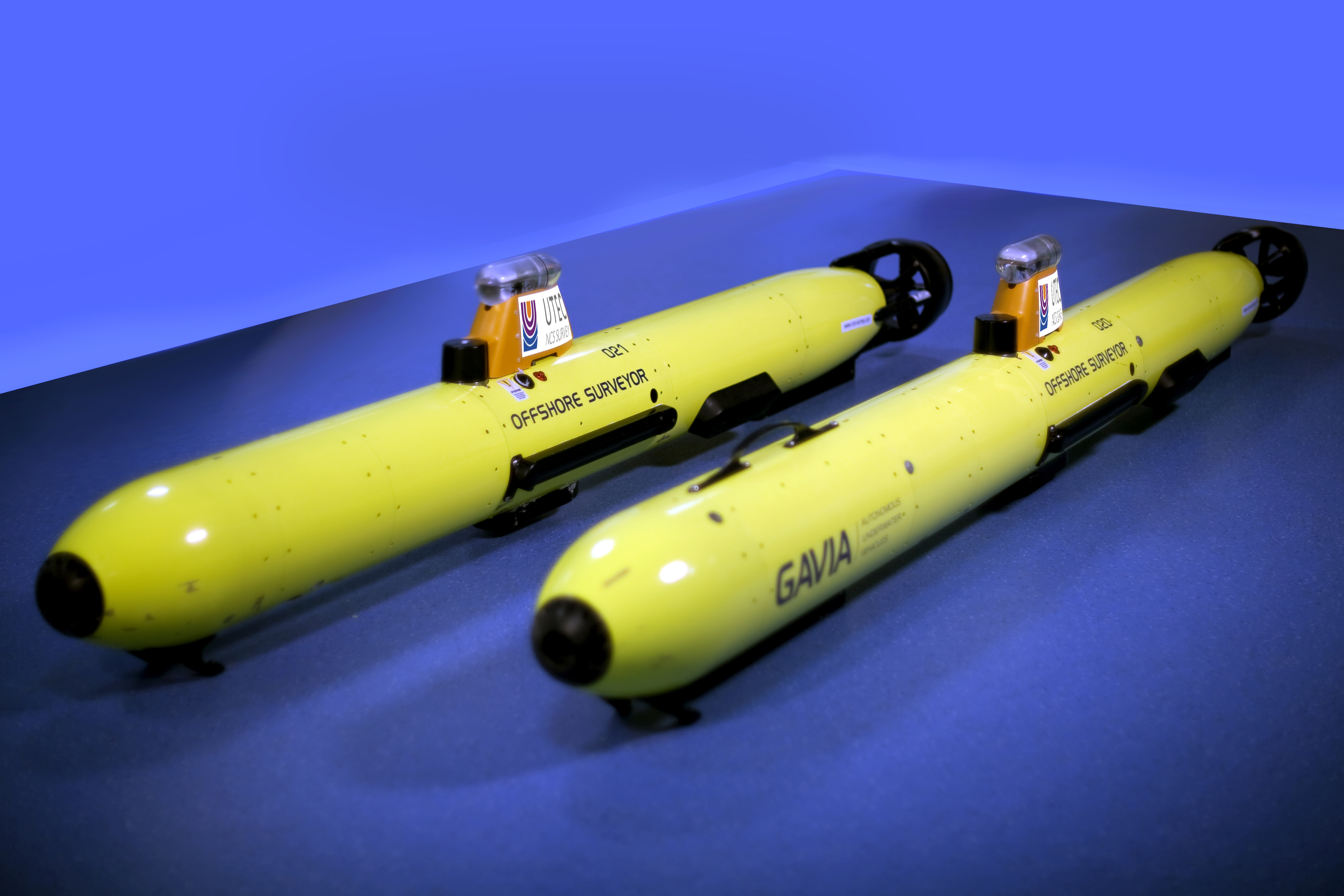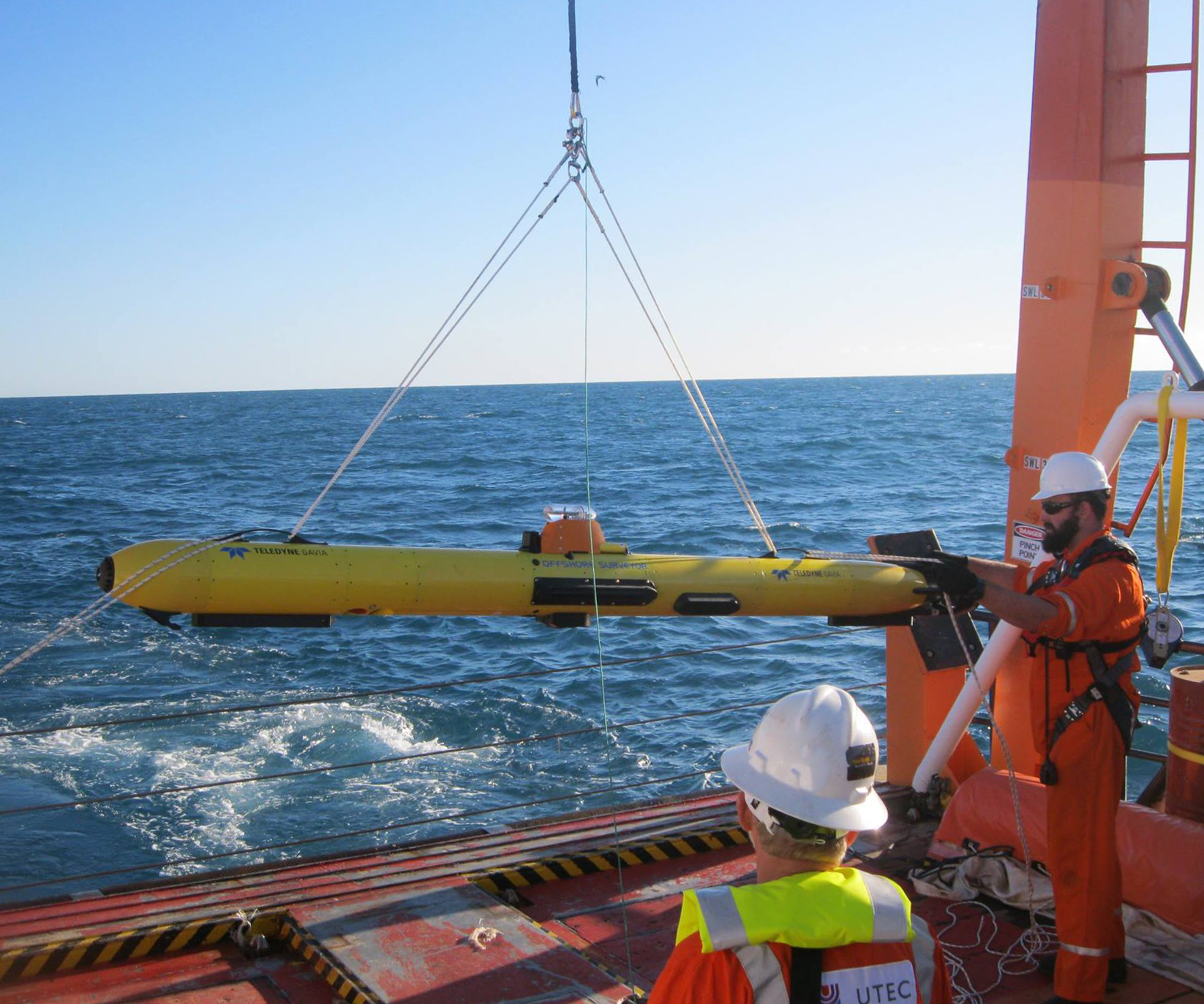
AUVs can be a cost-effective way to collect critical data needed when conducting surveys. By operating at a constant altitude above the seabed and being completely decoupled from the surface, AUVs provide a stable low-noise platform that enables the acquisition of high-quality data throughout the entire operating depth range. Additionally, when using modular and portable AUVs, the ability to operate from a vessel of opportunity provides low-cost and flexible surveys.
When compared to traditional survey methods of using vessel-mounted, towed or ROV systems, there are very clear advantages to using a low-logistics AUV, namely:
• Improved platform stability and data quality;
• Consistent resolution through the operational depth range;
• Low logistics;
• Higher productivity; and
• The ability to survey in very shallow water (as little as 2 m [6.5 ft]).
UTEC Survey is invested in developing low-logistics AUV technology to provide improved survey solutions. To achieve this goal, the company developed a collaborative relationship with Teledyne. The partnership seeks to create a framework for addressing customer needs through the development of new and improved low-logistics AUV capabilities. A key milestone occurred in March when teams from both organizations met to test several applications at Teledyne’s Seabotix facilities in San Diego.

Successful deepwater dives
The Teledyne Gavia Offshore Surveyor is rated to 1,000-m (3,281-ft) depth. The close proximity of the continental slope to San Diego allowed UTEC Survey to prove that the technology is capable of reaching these depths and can ensure that personnel have expertise to repetitively-run missions in deepwater. During the trials, the AUV dove successfully to a depth of 897 m (2,942 ft) on three separate missions, acquiring sidescan sonar and multibeam echosounder datasets. After leaving the surface, the AUV took less than 25 minutes to reach its survey depth. In addition to the AUV, the trials utilized a variety of new technologies, including long baseline (LBL) transponders and sidescan sonars.
The Teledyne Benthos LBL transponders are deployed and calibrated in subsea arrays and can be used to enhance the AUV position solution. The derived position is integrated directly into the AUV navigation system, which can ensure accurate positioning in real time without the need for communication to the surface. Having the LBL positions integrated directly into the AUV navigation system results in the AUV being available to commence seabed survey operations with minimal delay regardless of depth. Lightweight LBL transponder nodes with acoustic burn wires allow rapid deployment and retrieval while other AUV operations are still underway.
A new model of the AUV control module, which now houses an Edgetech 2205 sidescan sonar, was used for several missions during the trials. The sidescan sonar is capable of recording low-frequency and high-frequency data simultaneously at 600 kHz and 1,600 kHz, respectively. The low-frequency transducers have a range of 100 m (328 ft) per side, while the high-frequency transducers are capable of reaching ranges up to 30 m (98 ft) per side. The range performance of the Edgetech system doubles what was being achieved with the previous sidescan sonar system and can result in a signifi cant increase in productivity.
The new L-3 Klein Multibeam was used for several missions during the trials. The Klein UUV 3500 is an interferometer with a backscatter module that can record bathymetry at 455 kHz and backscatter at 455 kHz and 900 kHz. The effective range is 125 m (410 ft) for each side, and the technology has a superior resolution to the AUV’s existing multibeam system. This more than doubles the potential daily multibeam echosounder production level for Teledyne Gavia AUVs.
A new AUV control module model with a new C-band transducer was used on missions during the trials. The new transducer design eliminates two nulls in the beam pattern to provide complete coverage and adds internal oil to provide optimum acoustic coupling. These improvements now allow uninterrupted acoustic communication between the AUV and the vessel, with constant navigation data interchange and a solid communication channel for acoustically steering the AUV via pilot mode if necessary.
Recovering an AUV following completion of a mission is one of the most challenging tasks in any AUV operation. Recovery has been improved substantially through the development of a recovery fl oat and pneumatic line thrower (PLT). Once the AUV is on the surface, a command is remotely sent to the AUV releasing a recovery float, which is deployed from the AUV nosecone on a 10-m (33-ft) length of rope. The PLT is then used to throw a grapple over the recovery rope, allowing the AUV to be pulled back to the vessel in an easily controlled and safe fashion. The development of the new recovery float and PLT constitutes a signifi cant improvement to the recovery process.
Case study
The UTEC AUV team recently provided support to a major installation contractor in West Africa. The Teledyne Gavia AUV performed pre-lay and as-laid surveys in support of a near-shore pipelay barge offshore Angola and Congo. Operations were completed over a three-month period from a locally chartered vessel, demonstrating the fl exibility of the vehicles to be deployed from vessels of opportunity.
Pipeline route and barge anchor corridor pre-lay surveys were carried out in water depths of 3 m to 12 m (9.8 ft to 39 ft) utilizing the Gavia’s multibeam echosounder and sidescan sonar survey sensors. It was subsequently redeployed to carry out post-lay surveys along the pipeline corridor to inspect for free spans and other anomalies. In addition, an anchor pre-lay survey was conducted to clear the way for barge operations alongside an existing platform. This aspect of the work scope demonstrated the versatility of the AUVs as surveys were completed inside the 500-m (1,640-ft) zone of the platform without affecting the platform operations.
This is the first time that the AUVs have been used over an extended period to support construction operations, and their use showcased the capabilities of both systems and operators. The client remobilized the vehicles in August for a further survey campaign.
Recommended Reading
Not Sweating DeepSeek: Exxon, Chevron Plow Ahead on Data Center Power
2025-02-02 - The launch of the energy-efficient DeepSeek chatbot roiled tech and power markets in late January. But supermajors Exxon Mobil and Chevron continue to field intense demand for data-center power supply, driven by AI technology customers.
The New Minerals Frontier Expands Beyond Oil, Gas
2025-04-09 - How to navigate the minerals sector in the era of competition, alternative investments and the AI-powered boom.
Energy-Focused AI Platform Collide Closes $5MM Seed Round
2025-04-15 - The $5 million seed round was led by Mercury Fund, with participation from industry veterans Bryan Sheffield and Billy Quinn, among others.
Expand Energy Joins EQT in Triple-Investment-Grade Credit-Rating Club
2025-04-16 - The trifecta of endorsements assures Expand Energy, the largest gas producer in the U.S., a seat alongside EQT Corp. at the LNG and AI data center gas-supply negotiating tables.
Chevron Technology Ventures Would Like to See the Manager
2025-03-13 - Chevron Corp.’s Chevron Technology Ventures, which turns 25 this year, pays close attention to leadership teams when making investment decisions in technology startups.
Comments
Add new comment
This conversation is moderated according to Hart Energy community rules. Please read the rules before joining the discussion. If you’re experiencing any technical problems, please contact our customer care team.





